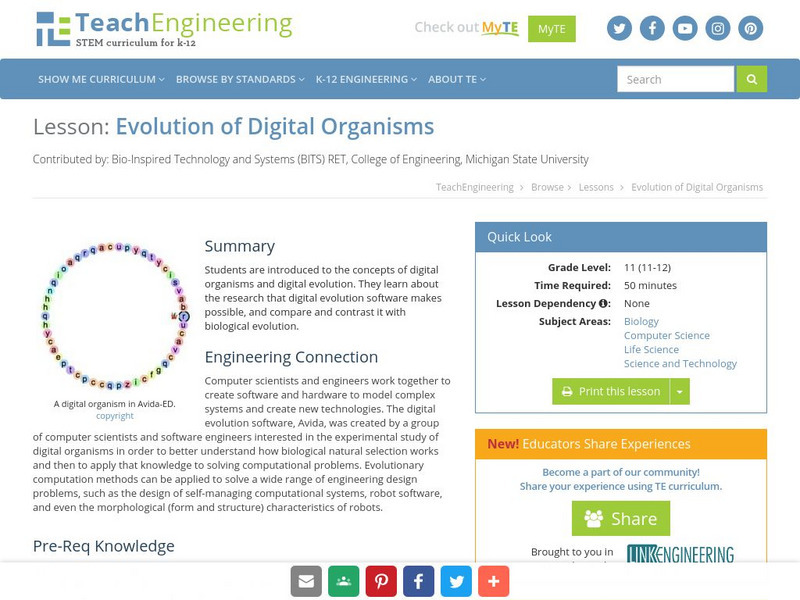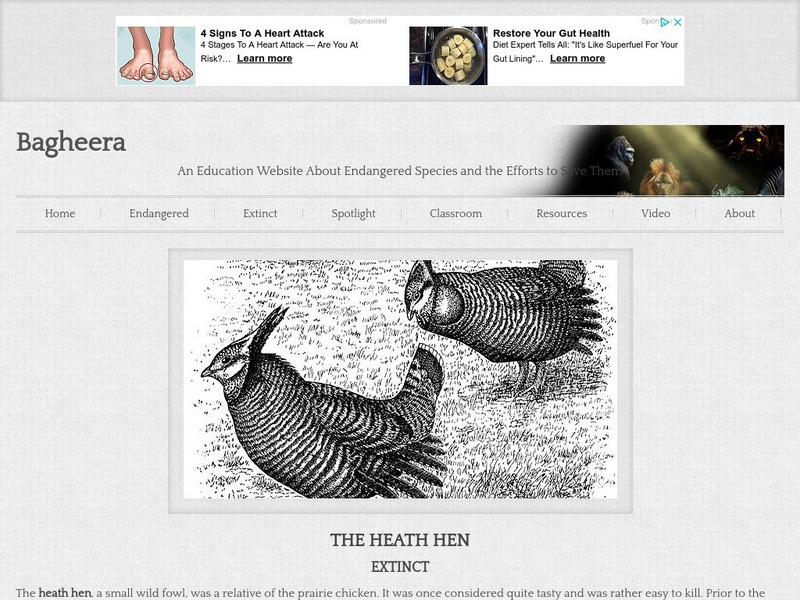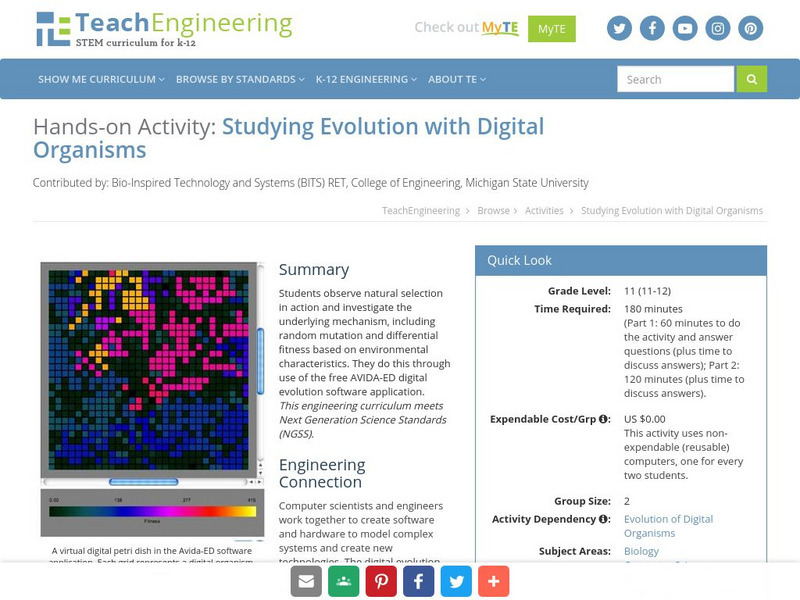Curated OER
Coral Reefs Endangered
Students research where in the world coral reefs are located. In this ecology instructional activity, students create food chains and food web. They simulate growing coral reefs to understand their characteristics better.
Curated OER
Introduction to Biomes
Eighth graders identify the different kinds of biomes. In this life science lesson, 8th graders explain their importance in an ecosystem. They take a BrainPop quiz at the end of the lesson..
Curated OER
Sea Turtle
Young scholars listen to a story about a sea turtle sanctuary. They participate in a discussion about the sea turtles. They analyze some of the hazards that can hurt sea turtles and brainstorm ways to help the problem. They write and...
Curated OER
Rapid Mycological Assessment
Students examine types of mycology methods. They practice using new vocabulary and answer key questions. They complete a field survey and analyze their results.
Curated OER
Extraction of DNA from White Onion
Students conduct lab test with minced onion to determine where chromosonal DNA is located within the cell, and whether or not it can be extracted.
Curated OER
Geography: World Dynamics
Students discuss and examine how the world is changing. After reading an article, they discover the immediate changes that have taken place and how they have effected living things. They complete a worksheet identifying the changes as...
Curated OER
Studying Fossils
Students hypothesize dinosaur size and speed by looking at dinosaur track way or by measuring a dinosaur models water displacement. In addition, techniques to help students become familiar with the ways paleontologists study fossils can...
Curated OER
Studying Fossils
Students study the Evolution in the Light of Fossils. Activities in this lesson range from quantitative measurements of hominoid skulls to the comparison of hominoid bone structures. They hypothesize dinosaur size and speed by looking at...
Curated OER
Yearly Place Based theme
Young scholars are awaken to their surroundings. They gain a greater access of how their city was formed. Students assess the human impact on the land. They comprehend the cultural diversity of the city.
Curated OER
The Web of Life
Students describe the importance of having a balance ecosystem. After a brief lecture, students give an explanation of the properties of an ecosystem. They create a web, using yarn which shows how the various members of the ecosystem are...
Curated OER
Animals of Point Reyes
Seventh graders explore how disasters affect animals. In this animal habitats lesson students create an animal that will survive in Point Reyes habitats.
Curated OER
The Environment: Vocabulary
In this environment vocabulary learning exercise, students complete 12 multiple choice questions, then translate a set of "environment words."
CK-12 Foundation
Ck 12: Life Science: Mass Extinctions
[Free Registration/Login may be required to access all resource tools.] An organism goes extinct when all of the members of a species die out and no more members remain. Extinctions are part of natural selection. Species often go extinct...
TED Talks
Ted: Ted Ed: Mammoths vs. Mastodons: What's the Criteria for De Extinction?
There's been a lot of talk and research interest around the possibility of resurrecting certain organisms (or, at least their genomes) from extinction, with Woolly Mammoths being prime candidates for such an endeavor. But what about a...
CPALMS
Florida State University Cpalms: Florida Students: Do or Die: Extinction in a Changing World
A Resource to help understand that concept of natural selection and to realize that organisms need to adapt to survive.
TeachEngineering
Teach Engineering: Competing Evolved & Engineered Digital Organisms
Students engineer and evolve digital organisms with the challenge to produce organisms with the highest fitness values in a particular environment. They do this through use of the free Avida-ED digital evolution software application. The...
TeachEngineering
Teach Engineering: Evolution of Digital Organisms
Young scholars are introduced to the concepts of digital organisms and digital evolution. They learn about the research that digital evolution software makes possible, and compare and contrast it with biological evolution.
Bagheera
Bagheera.com: Extinct in the Wild Heath Hen
This article is about the now extinct heath hen. There is a lot to be learned from organisms that have died out to help prevent other extinctions. The questions for thought are excellent discussion starters.
Other
Conservation Ecology: Assessing Extinction Risk
This site discusses how genetic variability is correlated with the risk of organism extinction. It also discusses how bottlenecks can reduce genetic variability in populations leading to extinctions.
TeachEngineering
Teach Engineering: Studying Evolution With Digital Organisms
Students observe natural selection in action and investigate the underlying mechanism, including random mutation and differential fitness based on environmental characteristics. They do this through use of the free AVIDA-ED digital...
BBC
Bbc: Gcse Bitesize: Evolution Aqa
Evolution is the change of inherited characteristics within a population over time through natural selection, which may result in the formation of a new species. Fossils provide a record of organisms that lived a long time ago. They also...
Howard Hughes Medical Institute
Hhmi: Bio Interactive: Explore Your Inner Animals
Did you know parts of our body was inherited from distant animal ancestors? In this interactive students will investigate different anatomical features of the human body to reveal our evolutionary history. Learn how humans share...
National Humanities Center
National Humanities Center: America in Class: America in the 1920s: Religion & Science
The National Humanities Center presents collections of primary resources compatible with the Common Core State Standards - historical documents, literary texts, and works of art - thematically organized with notes and discussion...
Open Curriculum
Open Curriculum: Multicellular Life
To describe the diversity of unicellular organisms which arose over 2 billion years of evolution.

























